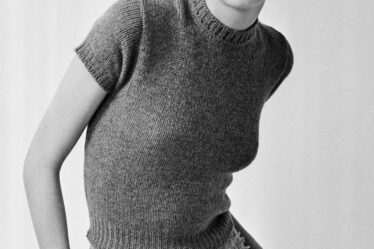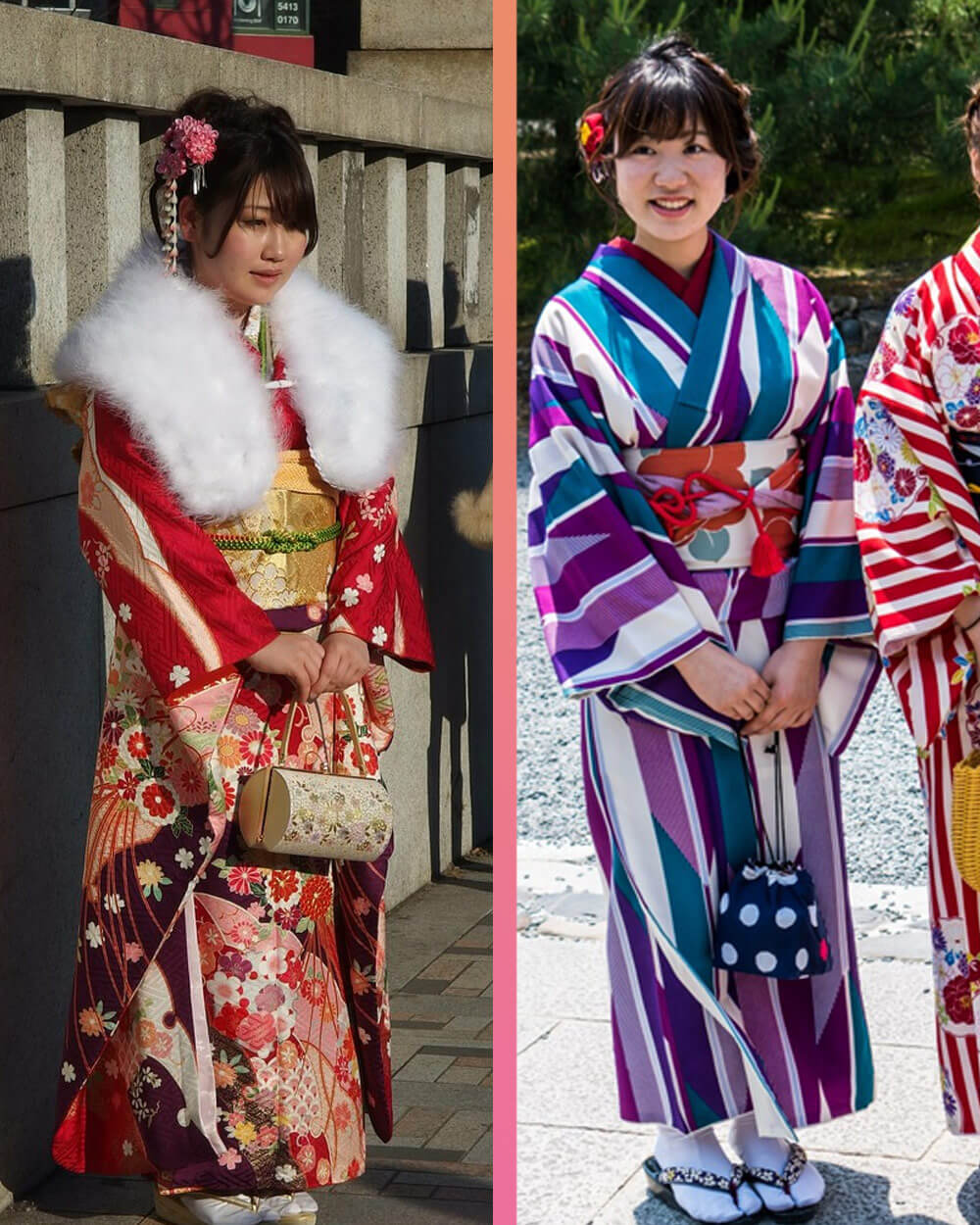
Both Kimono and Yukata garments are Japanese clothing items deeply rooted in Japanese culture, and though they share similarities, you need to know the differences.
Both used by men and women, depending on the season, yukatas and kimonos can appear identical to the unknowing eye.
However, a Japanese person will tell the differences – pattern, style, cut, color, material – between a traditional and casual kimono, let alone a kimono vs. yukata.
In this article, I’ll share the difference between the yukata and kimono, what they are made of, and how and where to wear them.
What is a Kimono?
The kimono – translating from Japanese to “a thing to wear.”
Striped down to basics, the regular kimono dress is a T-shaped garment formed of four separate pieces.
These pieces are held together with intricate folds and cinched at the waist with the obi belt.
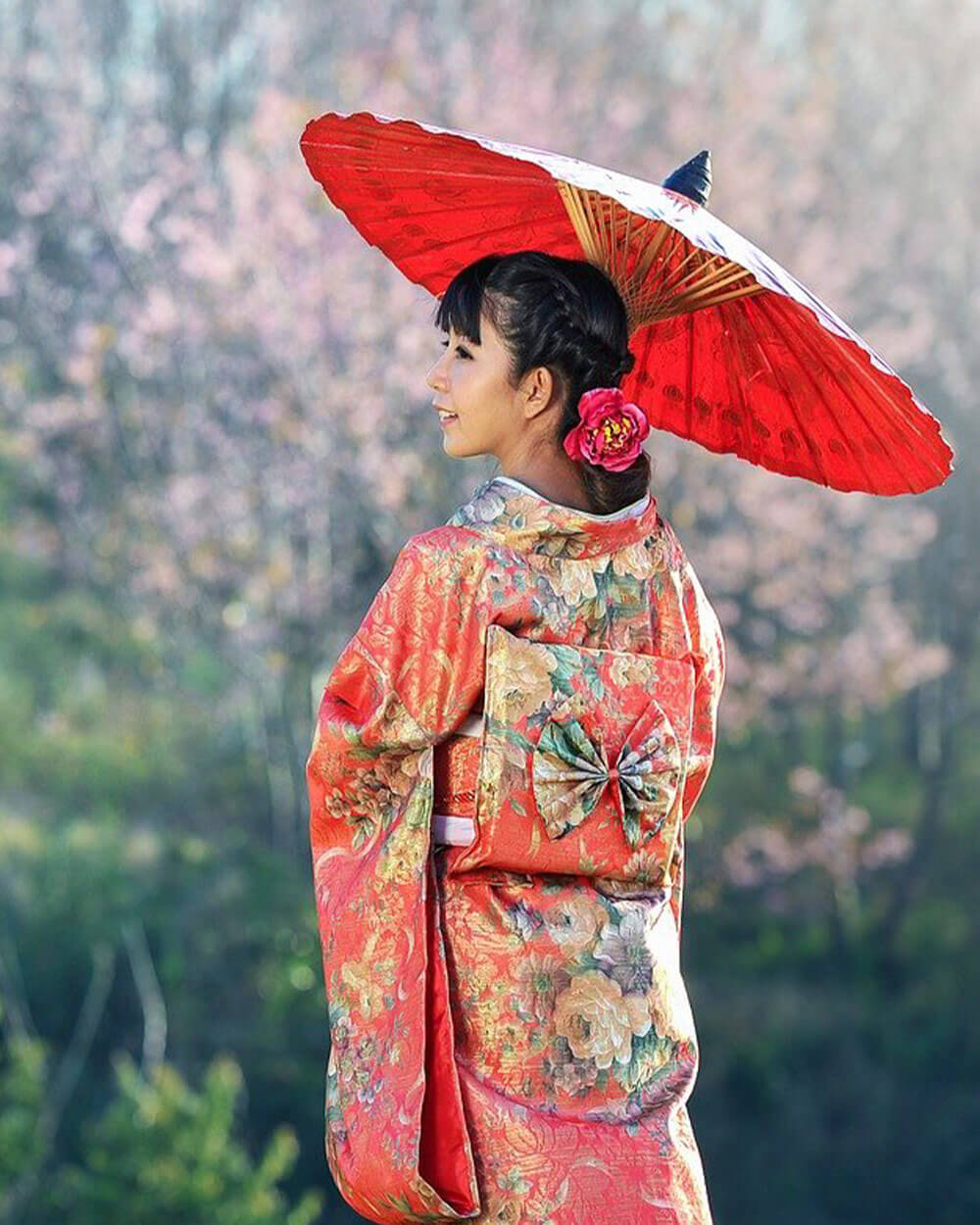
What is the Origin of Kimono?
The kimono was first introduced as a Japanese version of a traditional Chinese garment known as the hanfu.
What is Kimono Made of?
Kimonos are usually made of luxurious silk and ornate with brocade embellishments.
How to Wear Kimono?
As with many Japanese garments and traditional clothes, there are rules on how and where to wear a formal kimono with sleeves.
Comprising an outer and inner layer, all kimonos must be worn with at least two collars regardless of the season.
What are the Different Types of Kimonos?
Kimonos cuts vary in style depending on the time of year.
The lighter summertime kimonos come unlined, while lined variations are recommended for autumn and spring.
Finally, there are padded options for winter-style kimonos.
Why is Kimono so Popular in Japan?
The popularity of the kimono in Japan started to grow as, despite the many layers, this formal occasion garment is undeniably practical.
That practicality proved particularly handy in snowy winters when a thickly layered kimono (made from cotton or silk) protected the wearer from the blistering cold while ensuring they still looked elegant and chic.
That same philosophy transferred to modern times, where polyester kimonos are among the most popular choices, thanks to being warm, versatile, available in a wide range of colors, machine washable, and, most importantly, affordable.
What Does Kimono Symbolize?
The kimono style and aesthetic reflect the wearer’s social status. Also, the images used on the kimono have their own meanings.
For example, the image of the crane on the kimono is a symbol of longevity and good fortune, meaning “to live for a thousand years and to inhabit the land of the immortals.”
What is a Yukata?
A yukata is almost like a summer kimono, made of much lighter materials, and offers a versatile and appropriate style for a more casual setting.
To a certain extent, Yukata can be categorized as a type of kimono made from lighter material and more suitable for everyday life.
That’s why sometimes it’s called a yukata kimono; however, that practice is not very common.
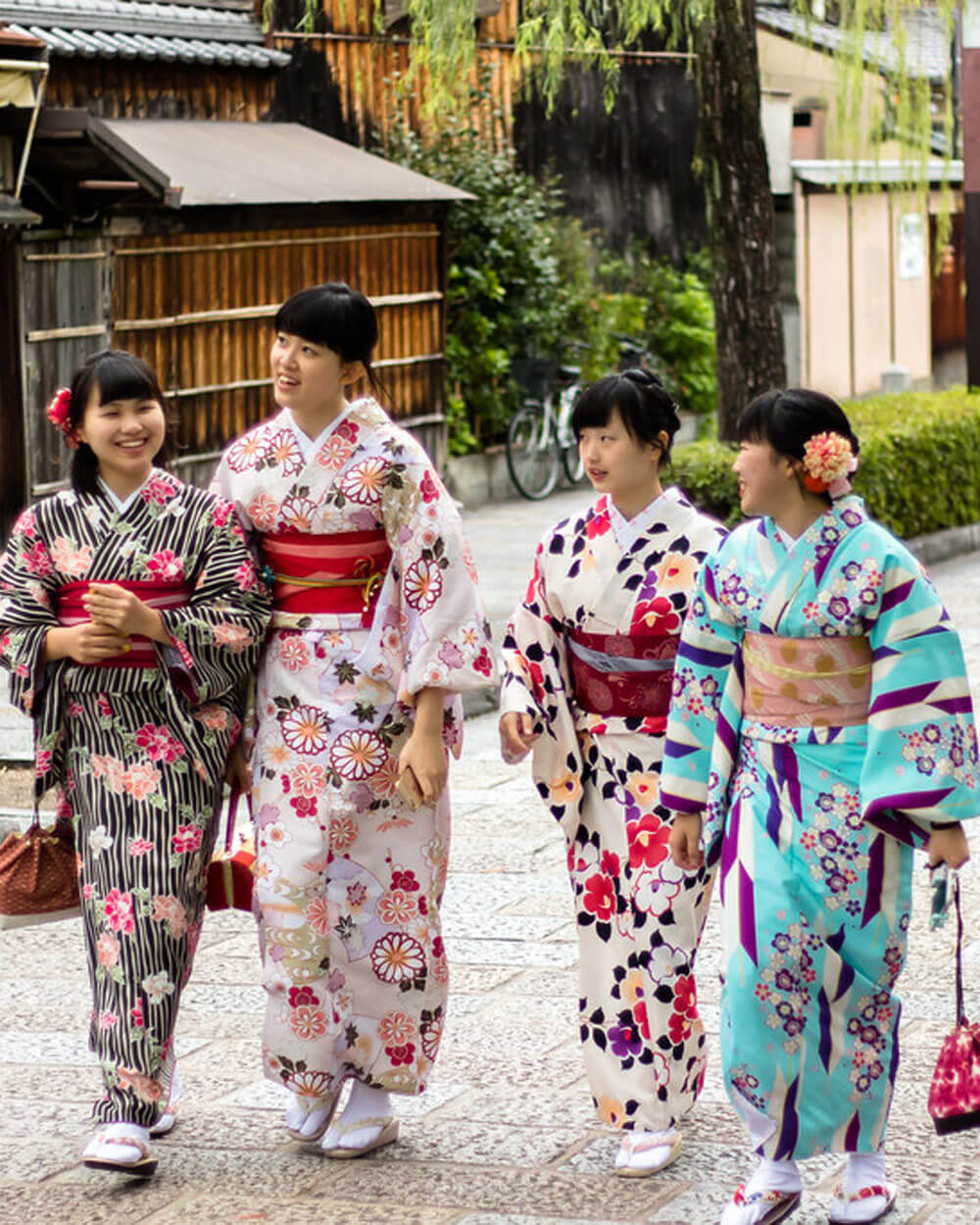
What is the Origin of Yukata?
Yukatas take the name from a Japanese word for bathing cloth, which is how the item initially came about.
Resembling the style of a Western-like robe or dressing gown, yukatas were initially used before or after baths.
That is why, from a style perspective, the yukata bridges the gap between summer dresses, bathrobes, and kimonos.
What is Yukata Made of?
Usually made of breathable materials like cotton or lightweight synthetic fabrics to stay comfortable during summer activities.
Why are Yukatas so Popular in Japan?
Yukatas have become garments that can be worn outside the comfort of your home.
Nowadays, yukatas are casual garments suitable for daily wear – at a significantly lower price point than kimonos – especially silk ones.
Though women most often wear them, it has recently become increasingly popular for men to wear yukatas in the summer.
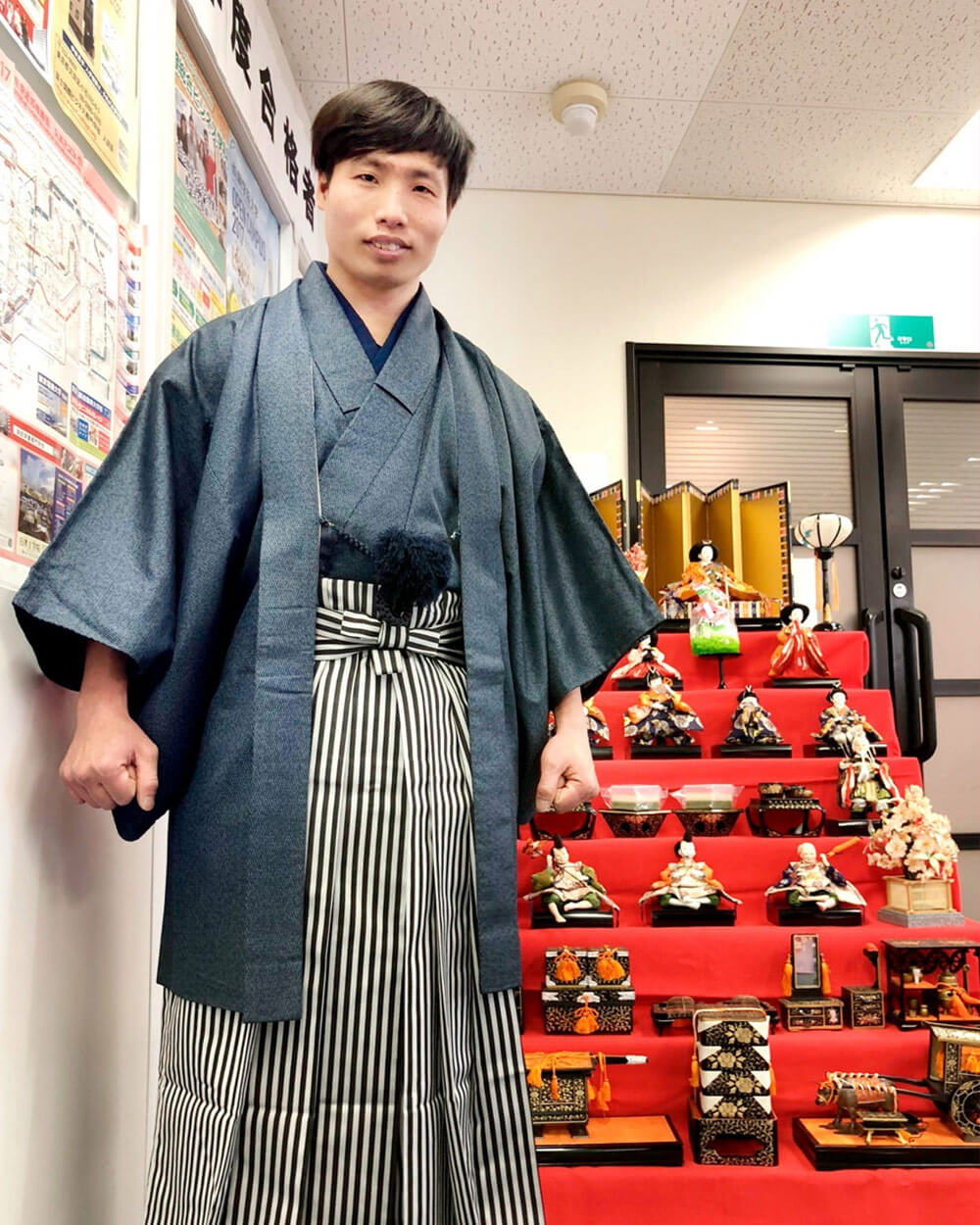
As an inexpensive garment with less formal status, yukatas allow for experiments in color, patterns, and accessories.
That’s why yukatas are the more accessible choice for aficionados of Japanese fashion.
Difference Between Kimono and Yukata
Compared to yukata, the Japanese kimono is also stylistically older, more traditional, and a significantly more expensive garment.
However, these are not the only differences between Kimono and Yukata.
This section will examine all the differences between the two Japanese garments.
We will also compare styles and materials and how, where, and when they are worn.
1. Left Over Right
There is one golden rule for wearing both kimonos and yukatas – the left panel must always go over the right panel.
‘Left over right’ is more than a styling note; wearing them the other way around is considered offensive in Japanese culture.

That is because traditionally, the dead are dressed in a right-over-left kimono, so make sure you show respect for the culture that gave us those beautiful pieces of clothing.
2. Style, Shape, and Color
Because of yukatas’ similarity to bathrobes and dressing gowns, these garments are worn with significantly less formality and accessories than kimonos.
As expensive and opulently decorated kimonos are rarely washed, they’re worn (in most cases) with an inner layer called ‘nagajuban’ to protect the outer garment.
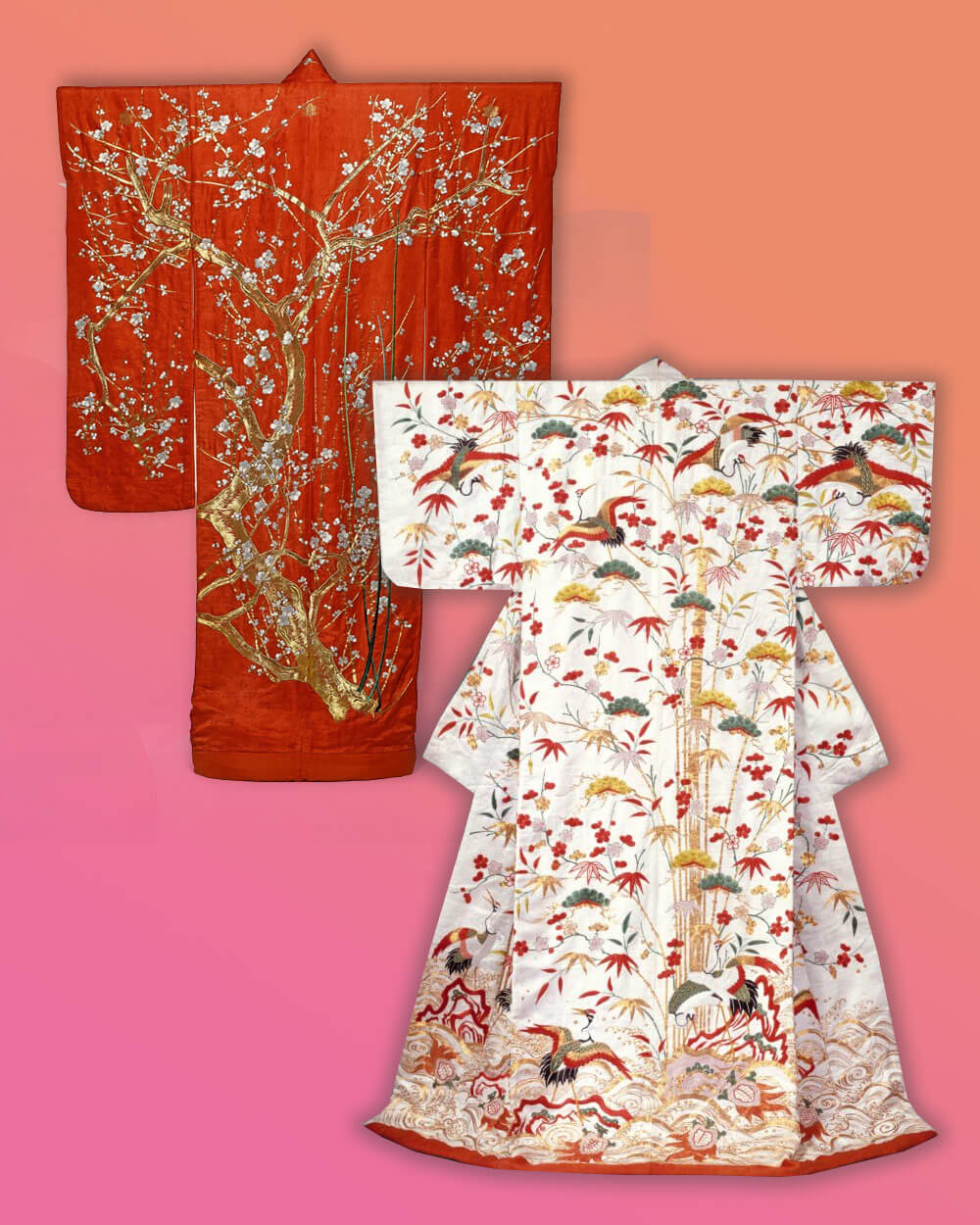
On the other hand, yukatas are much easier to wash, so there’s no need to wear an extra protective layer of cloth underneath.
Moreover, in general, kimonos and yukatas worn by Japanese women are designed with colorful patterns.
In contrast, men tend to wear them in more muted, color-block style variations.
Another critical difference between a kimono and a yukata is the style of the garment.
In particular, the shape of the collar and the sleeve, as you’ll see below:
3. Collar
While kimonos have a soft, full-width collar, yukatas are designed with a slightly narrower and stiffer collar.
The stiffness of the collar is, in most cases, dictated by the different types of materials used to make them.
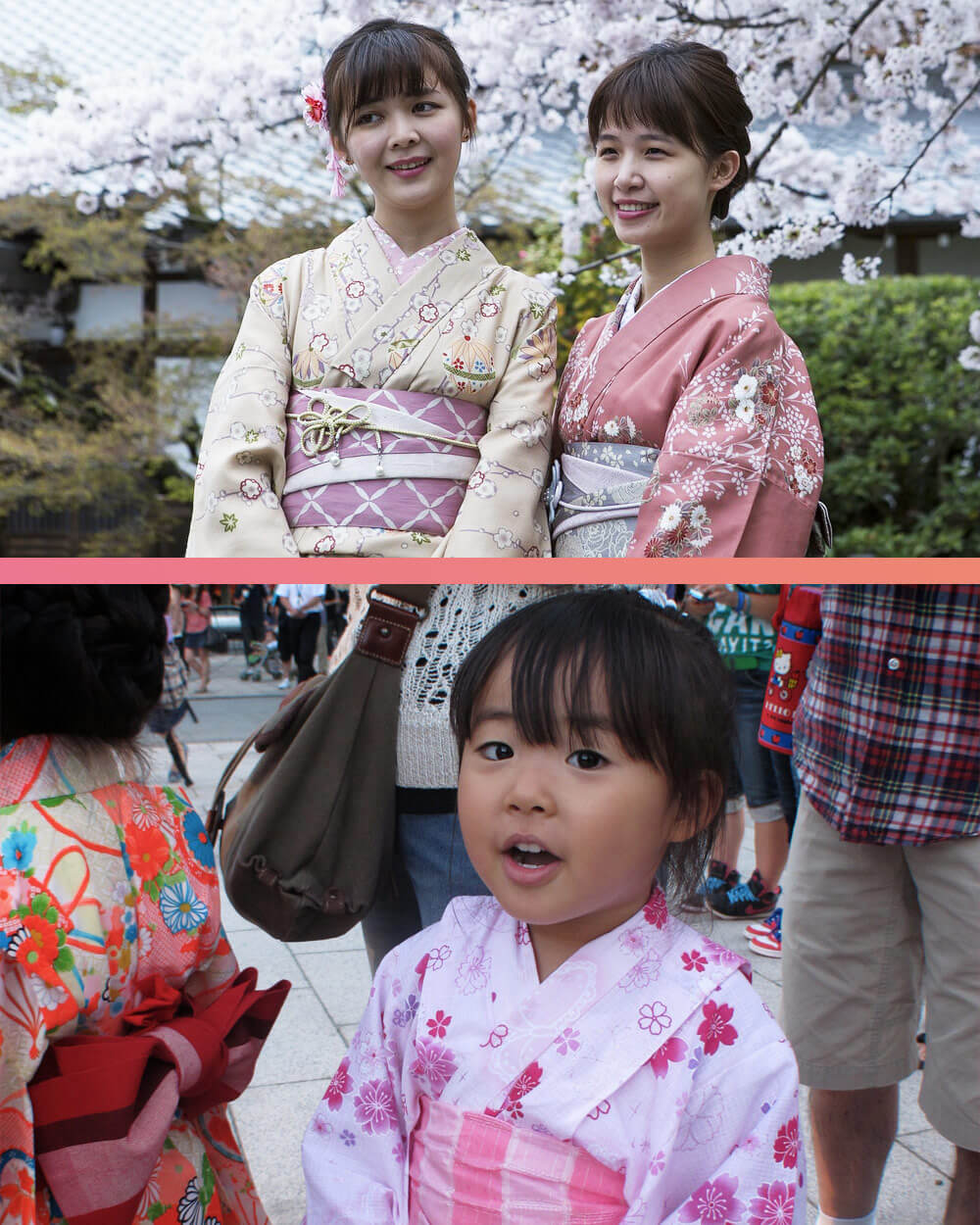
Additionally, kimonos have at least two collars – one close to the neck and the second one, called a ‘juban collar,’ layered below.
Jubans are not worn under yukatas, though sometimes people attach embellishments and ruffles to the collars for extra flourish and a personal touch.
4. Sleeves
Another clear style difference between kimonos and yukatas resides in the sleeves.
When it comes to types of kimonos, sleeves are not just a design choice as they often represent various things, such as age, status, or the solemnity of an event.
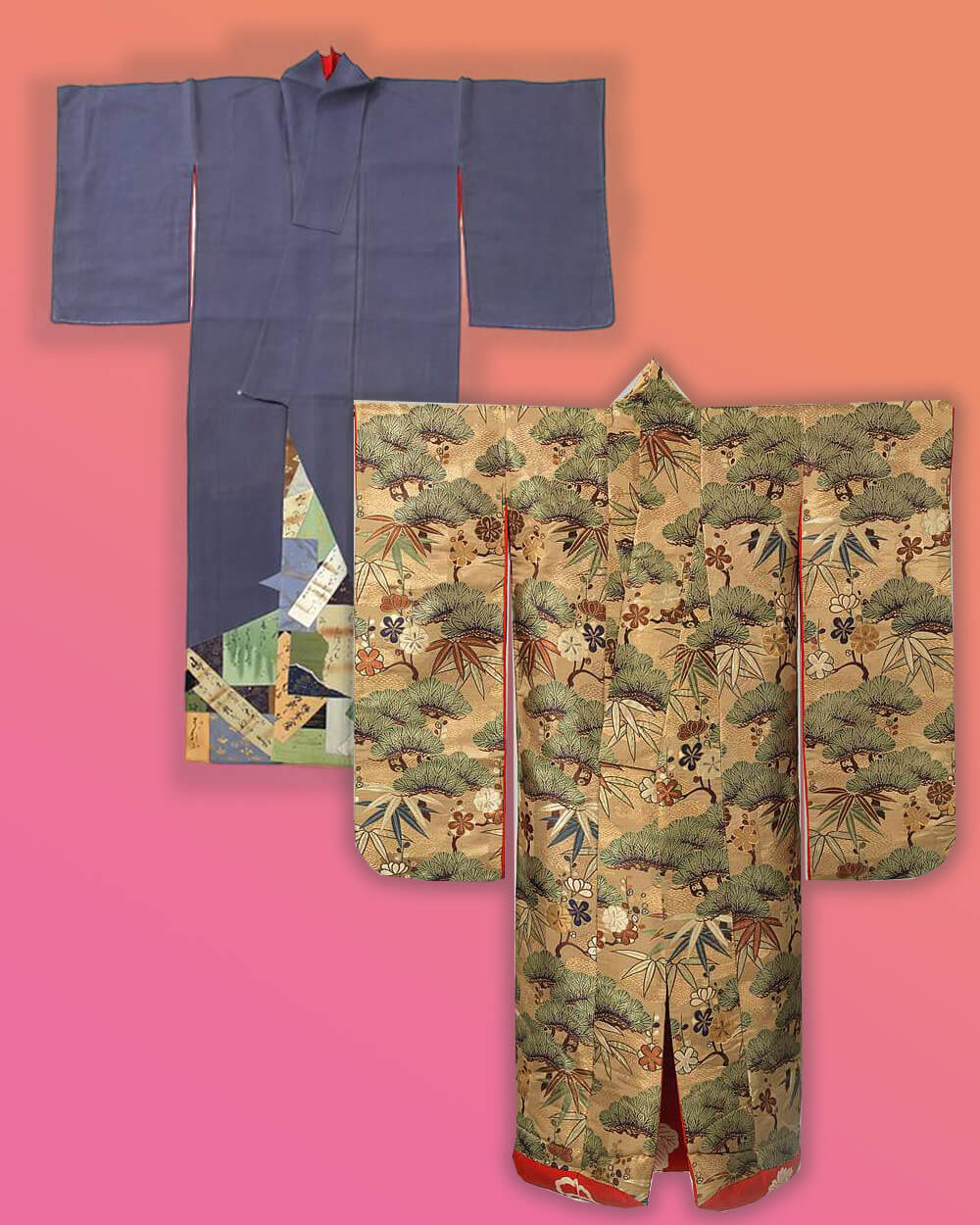
For example, unmarried women wear kimonos with elongated sleeves; sometimes, kimonos are so long that they can touch the floor!
According to the Japanese tradition, this allowed men to tell eligible ladies from married women.
Most commonly, though, kimonos have medium-length sleeves, while yukatas have sleeves that don’t exceed 50 centimeters and never touch the ground.
5. Materials
Traditionally, yukatas are made from cotton, and there are two main reasons for that:
- First, cotton is one of the most breathable and comfortable materials available.
- Second, cotton is quick-drying, making it the perfect choice for summer wear.
Modern yukata designs, made to be worn at music festivals, are sometimes made from synthetic materials that tend to be more efficient with their sweat-wicking properties.
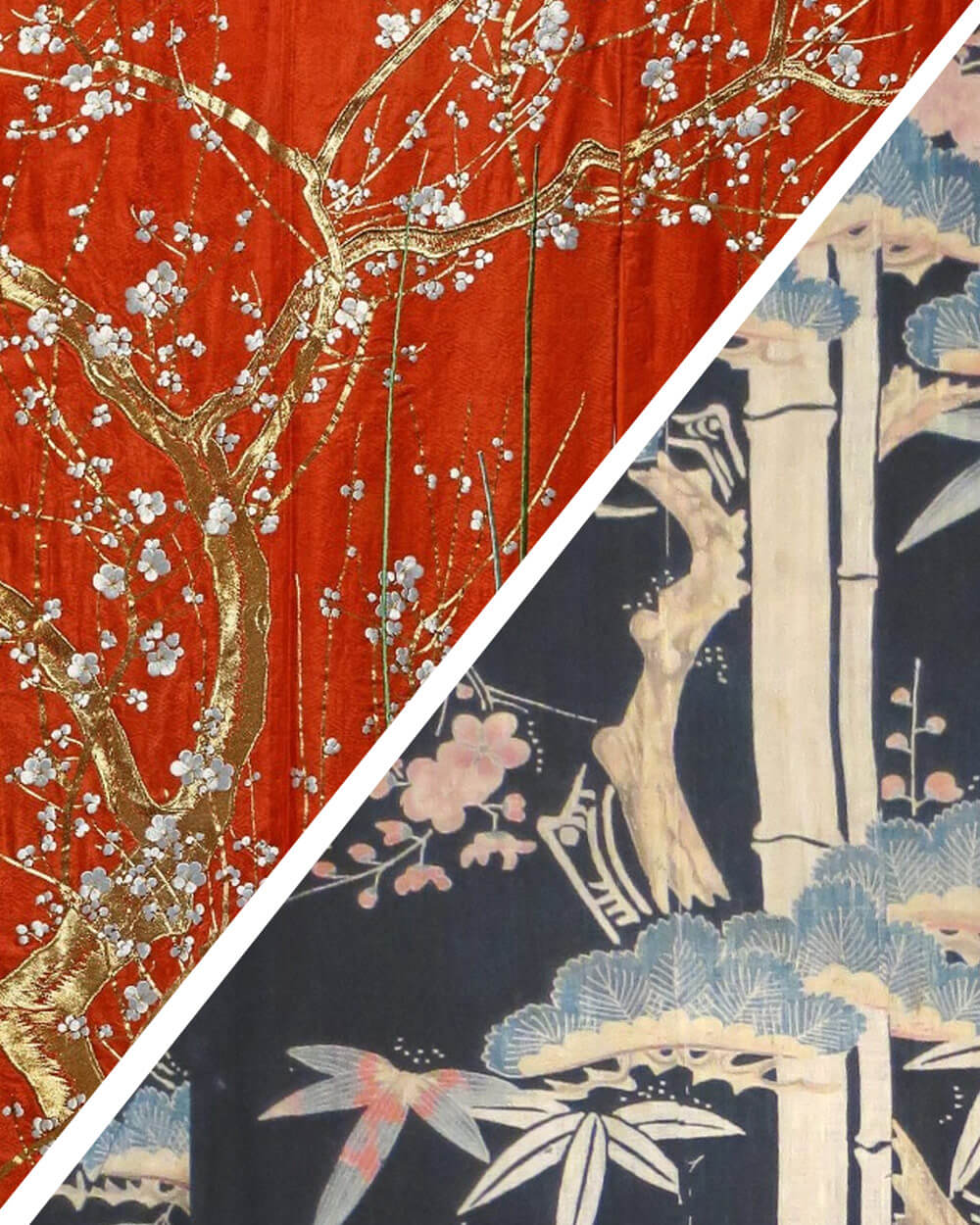
The most apparent difference between kimonos and yukatas, and certainly one that’s the most prominent to the wearer, is the lack of interior lining in yukatas – commonly made from a single piece of fabric.
Traditional kimonos have always been made from thicker, more expensive materials, which gives them an undeniable advantage in cold weather.
Kimono’s outer layer is often made from thick silk fabric and accessorized with fur shawls in harsh weather conditions.
However, casual summer kimonos are available in shorter versions to ensure more comfortable wear.
6. Ornaments
As is often the case in fashion, the devil is in the details or embellishments.
A formal or semi-formal ‘obi belt’ is the final decoration that cements the overall look for kimonos and yukatas.
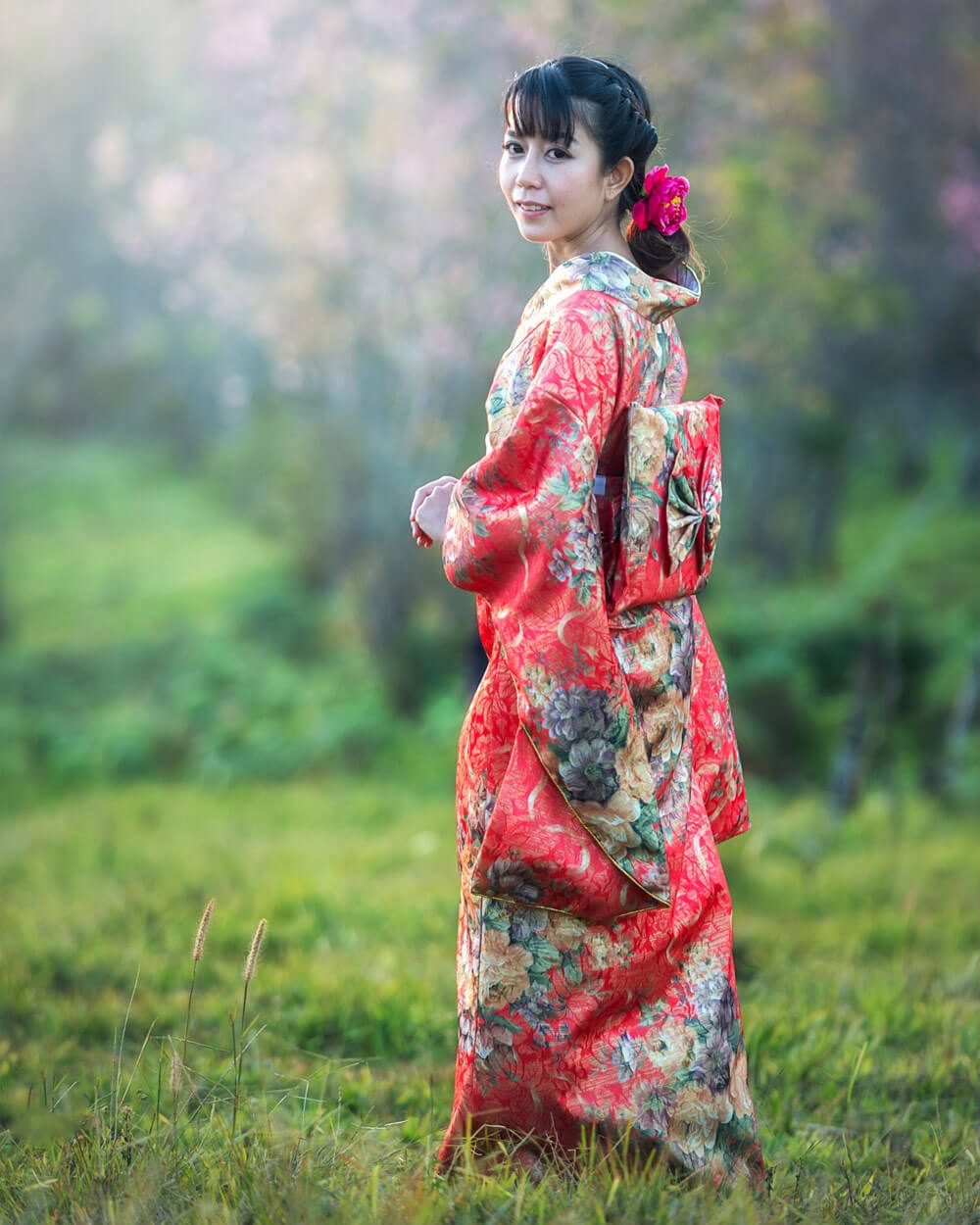
There are many varieties of the obi belt, including ‘heko obi,’ that’s a soft, scarf-like wrap, false ‘obi jime’ (usually holding an ‘obi bow’ in place), or an ‘obi’ that is twisted or folded at the front, showing off the color on the reverse.
The last variation is almost exclusively seen on yukatas, as that practice is not a common choice for a typical kimono.
Which is Better, Kimono or Yukata?
It depends. Regardless of its humble origins, yukata is festive and perfect for wearing at parties, summer festivals, firework displays, picnics, and other informal events.
However, yukatas wouldn’t be appropriate for a more formal, ceremonial occasion and should be avoided or replaced by kimonos.

For example, in Japan, visiting communal baths and hot springs – known as ‘onsens’ and ‘sentos’ – is still common, and that’s often where a yukata can be worn as a quick cover-up on the way to and from the bath.
On the other hand, Kimonos lead the way in formal wear – think of weddings, graduation ceremonies, and funerals.
Yet, these stylistic boundaries are becoming less pronounced in modern times.
You can see people wearing these traditional garments while running their daily errands and going about their everyday lives.
How to Wear Kimono Vs. Yukata
One thing is critical when wearing an actual kimono – always wear socks alongside the ever-so-classic Japanese sandals.
However, that is not the case with Yukatas. If someone is going sockless, chances are they’re wearing a yukata instead of a kimono.
There are some exceptions where people add patterned, flashy socks to their yukata look, so the method is not foolproof.
Weekly Newsletter
Keep up with the latest in fashion, beauty and style!
The Verdict
Japanese clothes have attracted people from all over the world for many years now.
The popularity of the formal kimono and the more casual yukata is rising outside Japan’s cultural and stylistic borders.
Thus, expect novel ways of wearing them, changes and variations adapted to new cultures, body types, and styles.
Yet, regardless of the changes, this guide helps you understand the difference between yukata and kimono, so you can choose the most appropriate outfit according to the event, be that a fireworks festival or a ceremony at shrines, at least, for now.
A graduate of the University of London in Journalism, Marta is a highly ambitious and rule-challenging copywriter with several years of experience in fashion, beauty, and lifestyle editorial writing.


